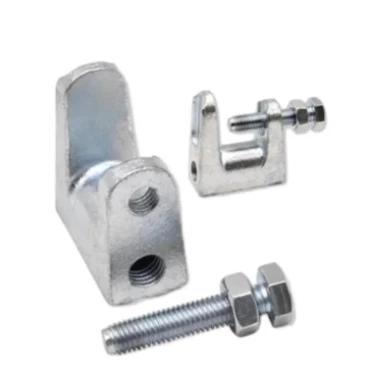Nov . 26, 2024 22:46 Back to list
Saddle Clamps for Wire Rope A Comprehensive Guide to Choosing and Using
Understanding Saddle Clamps for Wire Rope An Essential Guide
Saddle clamps, often referred to as wire rope clamps or U-bolt clamps, are crucial components used in various industries to secure and terminate wire rope. They play a vital role in applications such as construction, marine operations, and electrical installations. This article delves into the functionality, types, applications, and best practices for using saddle clamps effectively.
What is a Saddle Clamp?
A saddle clamp typically consists of a U-shaped bolt, a saddle, and two nuts. The wire rope is threaded through the saddle, and the U-bolt is placed over it. The nuts are then tightened, securing the wire rope in place. This configuration allows for a strong and reliable grip while ensuring that the tension is evenly distributed across the wire.
Types of Saddle Clamps
Saddle clamps come in various designs and materials, including
1. Standard U-Bolt Clamps These are the most commonly used type, suitable for general applications.
2. T-Slot Clamps Designed for specific machinery, T-slot clamps fit into the T-slots of equipment to provide a stable and secure attachment.
3. Heavy-Duty Clamps Constructed from more robust materials, these clamps are designed for high-load applications or harsh environments.
4. Stainless Steel Clamps Ideal for marine and corrosive environments, stainless steel saddle clamps offer superior resistance to rust and corrosion.
Applications of Saddle Clamps
Saddle clamps are utilized in a range of applications, including
- Construction and Rigging In construction sites, saddle clamps secure lifting cables and wire ropes, ensuring safety during operations. - Marine Applications Used in boat riggings, such as securing rigging lines on sailboats or linking chains and ropes on larger vessels.
- Electrical Installations Saddle clamps are often employed to secure overhead power lines and cable installations, providing support and preventing sagging.
saddle clamp for wire rope

Benefits of Using Saddle Clamps
1. Versatility Saddle clamps can be adapted to different wire rope sizes and types, making them a flexible solution for a variety of tasks.
2. Ease of Installation Installing a saddle clamp is relatively straightforward and can often be completed with basic tools.
3. Cost-Effective Compared to other securing methods, saddle clamps are an economical choice without compromising on safety or strength.
4. Support for Load Distribution The saddle design helps distribute the load evenly, reducing the risk of damage to the wire rope.
Best Practices for Using Saddle Clamps
To ensure optimal performance and safety when using saddle clamps, consider the following best practices
1. Select the Right Size Always choose a saddle clamp that matches the diameter of the wire rope; using the wrong size can lead to failure.
2. Follow Manufacturer Guidelines Each type of saddle clamp comes with specific instructions; adhering to these ensures correct installation and maximum strength.
3. Inspect Regularly Regular inspections of clamps for wear and tear can prevent failures. Look for signs of rust, deformation of the clamp, or any fraying in the wire rope.
4. Use Proper Torque When tightening the nuts on the U-bolt, use the proper torque specifications to avoid over-tightening, which can damage the wire rope.
5. Consider Load Ratings Always check the load ratings and ensure that your application does not exceed the specifications of the saddle clamp to maintain safety.
Conclusion
Saddle clamps are essential components in many industries, providing a reliable method for securing wire rope. Understanding their types, applications, and best practices for installation and maintenance can enhance safety and efficiency. Whether you are in construction, marine operations, or electrical work, saddle clamps are versatile tools that can ensure your operations run smoothly. Keep this guide in mind as you select and use saddle clamps in your projects.


